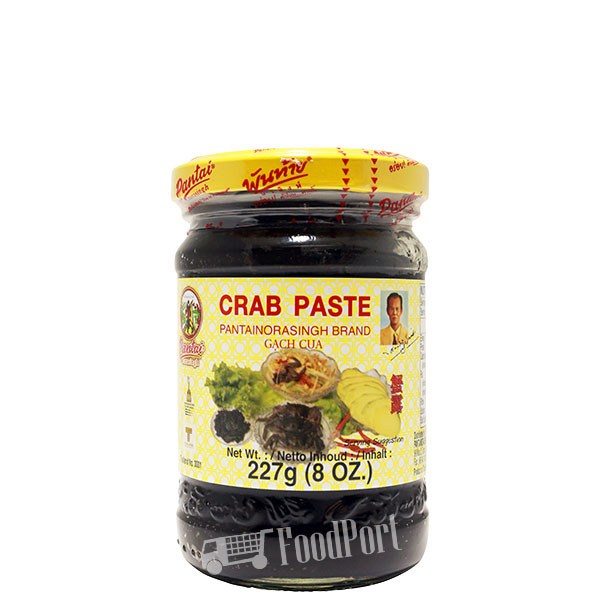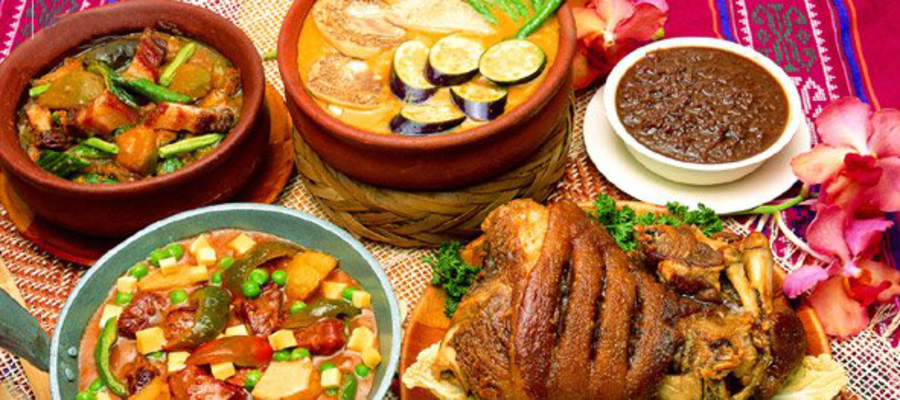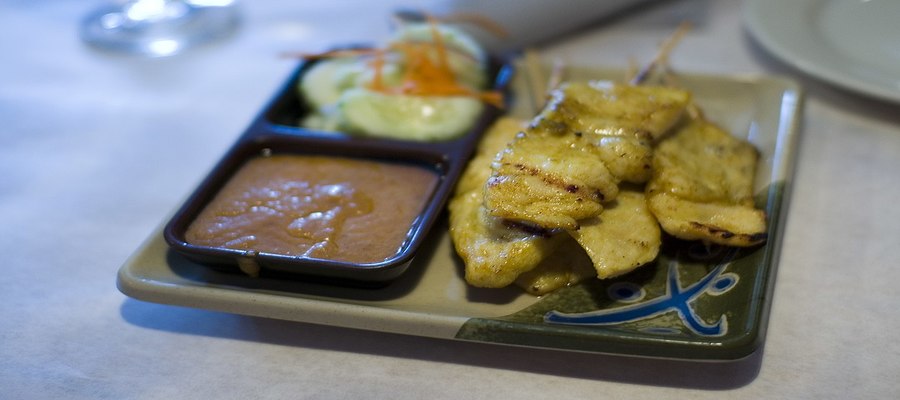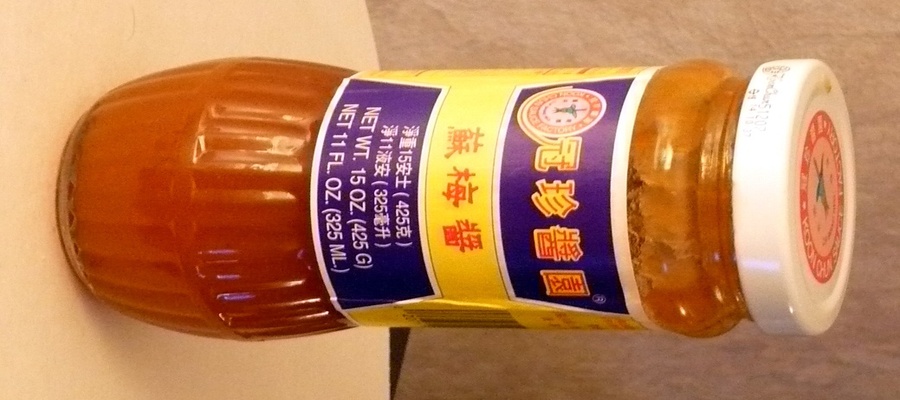Crab paste is a condiment that is used for flavoring a wide variety of Asian dishes. It is made from the flesh or meat of fresh crabs. Crab paste can be salted or salt-dried and then fermented to produce a soft-textured seasoning for foods. It bears a close resemblance to the Asian shrimp paste. And it can be used to season curries, rice dishes, soups, and stews.

image source: Wikipedia
This remarkable paste can also be served as a marinade with a wide range of exotic dishes.
Crab Paste and its Association with Asian Cuisine
This condiment is associated with Asian cuisine. And as you well know, the Asian culinary art features a mixture of preserved sauces and seafood pastes. Lots of Asian grocery stores sell this distinct flavorer as well as a few purveyors. Aside from using crab paste for Asian dishes, it can also be used for seasoning intercontinental dishes. That means foods from other cultures can even be seasoned without any hassles. The condiment is the perfect option if you don’t have access to fish paste, anchovies, or other related ingredients.
How healthy is crab paste?
Crab paste, also known as crab paste sauce or crab paste with soybean oil, is a condiment commonly used in Southeast Asian cuisine, particularly in Thai and Filipino dishes. It is made from fermented crab meat, salt, and sometimes soybean oil or other ingredients.
In terms of its nutritional profile, crab paste can vary depending on the brand and specific ingredients used. Here are some general points to consider regarding its healthiness:
- Protein: Crab paste can provide a moderate amount of protein, as it is made from crab meat. Protein is essential for various bodily functions, including tissue repair and maintenance.
- Sodium content: Crab paste is often high in sodium due to the fermentation process and added salt. High sodium intake is associated with increased blood pressure and may contribute to cardiovascular health issues, especially for individuals with hypertension or those at risk of developing it. It's important to consume crab paste in moderation, especially if you're monitoring your sodium intake.
- Fat content: Depending on the specific recipe and ingredients, crab paste can contain varying amounts of fat, particularly from soybean oil if included. While fat is a necessary part of a balanced diet, it's important to be mindful of the type and quantity consumed, especially if you're watching your overall fat intake.
- Fermented food benefits: Fermented foods, including crab paste, can provide probiotics and beneficial bacteria that promote gut health. These foods may aid in digestion and support a healthy microbiome.
- Other nutrients: Crab paste may contain some vitamins and minerals found in crab meat, such as vitamin B12, selenium, and omega-3 fatty acids. However, the specific amounts can vary, and the overall nutrient content may be relatively small compared to other food sources.
It's worth noting that as with any condiment or flavoring, the key to incorporating crab paste into a healthy diet is moderation. Using it as an occasional flavor enhancer in your dishes can add variety and taste but be mindful of the sodium content. It's also important to consider the overall balance of your meals, including other nutrient-dense foods like vegetables, whole grains, and lean proteins.
As always, if you have specific dietary concerns or health conditions, it's advisable to consult with a healthcare professional or a registered dietitian for personalized guidance.
How to Make Crab Paste
Making crab paste is not rocket science. Fresh crab meat is either wet fermented or salt dried. In either case, a considerable amount of salt is used to prevent bacteria from invading the crab meat. As soon as the fresh crab meat is cured, it is packaged in tubes or resealable containers. These containers are specially designed for this type of work. They can carry only small amounts of crab paste at a time. Make sure that you keep the containers stored in a dry and cool place. This contributes to the usability of the condiment, thanks to its high salt content.
Which are the most famous crab paste brands?
The popularity of crab paste brands can vary depending on the region and local preferences. Here are some well-known crab paste brands that are commonly recognized:
- Pantainorasingh: Pantainorasingh is a popular Thai brand that offers a range of sauces and condiments, including crab paste sauce. Their crab paste is known for its authentic flavor and is widely used in Thai cuisine.
- Maepranom: Maepranom is another renowned Thai brand that produces a variety of sauces and pastes, including crab paste. Their crab paste is highly regarded for its quality and is commonly used in Thai cooking.
- Mama Sita's: Mama Sita's is a Filipino brand that specializes in traditional Filipino sauces and mixes. They offer a crab paste sauce that is used in Filipino dishes like Kare-Kare, a popular peanut-based stew.
- Lee Kum Kee: Lee Kum Kee is a well-known Hong Kong-based brand that produces a wide range of Asian sauces and condiments. While they are more famous for their soy sauce and other products, they also offer a crab paste sauce that is used in various Asian recipes.
- Cock Brand: Cock Brand is a Thai brand known for its diverse range of sauces and condiments. They offer a crab paste sauce that is commonly used in Thai cuisine and is appreciated for its rich flavor.
These are just a few examples of popular crab paste brands, and there may be other regional or local brands that are popular in specific areas. It's worth exploring local Asian grocery stores or specialty food markets to find a variety of crab paste brands and choose the one that suits your taste preferences and culinary needs.
How many calories are in crab paste?
The calorie content of crab paste can vary depending on the brand and specific recipe used. However, as a general guideline, crab paste typically contains around 80 to 100 calories per 1 tablespoon (15 grams) serving. Keep in mind that these values are approximate and may vary depending on the specific product and its ingredients.
It's important to note that the calorie content of crab paste is primarily derived from its fat content, as well as a small amount of protein. If you are concerned about your calorie intake or following a specific dietary plan, it's recommended to refer to the nutrition label of the specific brand of crab paste you are using for more accurate information. The nutrition label will provide detailed information about the serving size and the specific amounts of calories, fat, protein, and other nutrients present in the product.
What Can I Use Crab Paste For?
Crab paste can be used for curries, sauces, soups, and stews throughout Asia. It can also be utilized in dressings for different foods as well as for marinades. It has an intensely salty taste or flavor which goes a long way in sweetening foods.

image source: www.FoodPorty.com
This is why you should be extra careful when using this ingredient. You should only use the paste as sparingly as possible. Make sure the amount you use brings out the flavor of your food without allowing the condiment to overwhelm it. Fermented crab meat, when used for cooking, gives any dish a somewhat sour taste. Dry, salted crab meat, on the other hand, leave cleaner flavors.
Conclusion
Asian cuisine is known to feature a broad range of fermented foods. And it is safe to say that crab paste is an unofficial representative of this food category. Other foods in this group come with highly intense flavors and are so pungent that many Westerners don’t enjoy them. Asians, however, have acquired a taste for bitter and sour foods. Therefore, get your Asian culinary skills up to par by starting with crab paste. This is an excellent way to start experimenting with the numerous exotic fermented ingredients associated with Asian cuisine.


